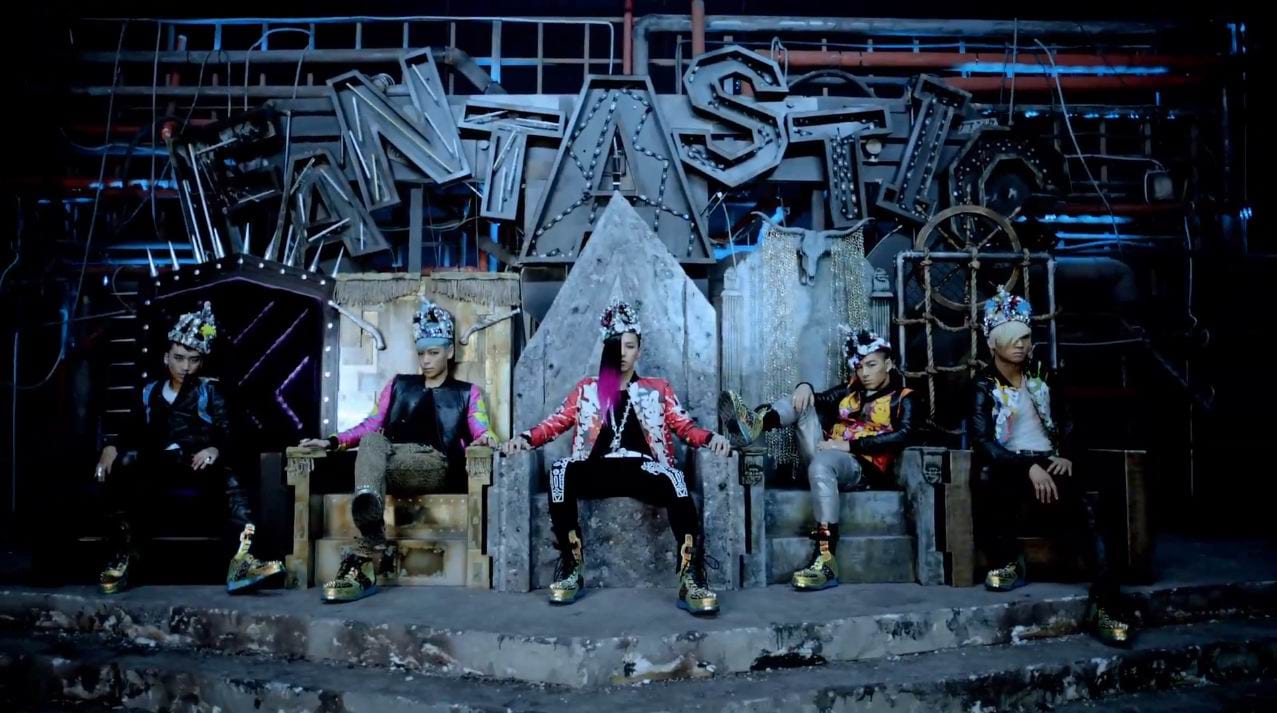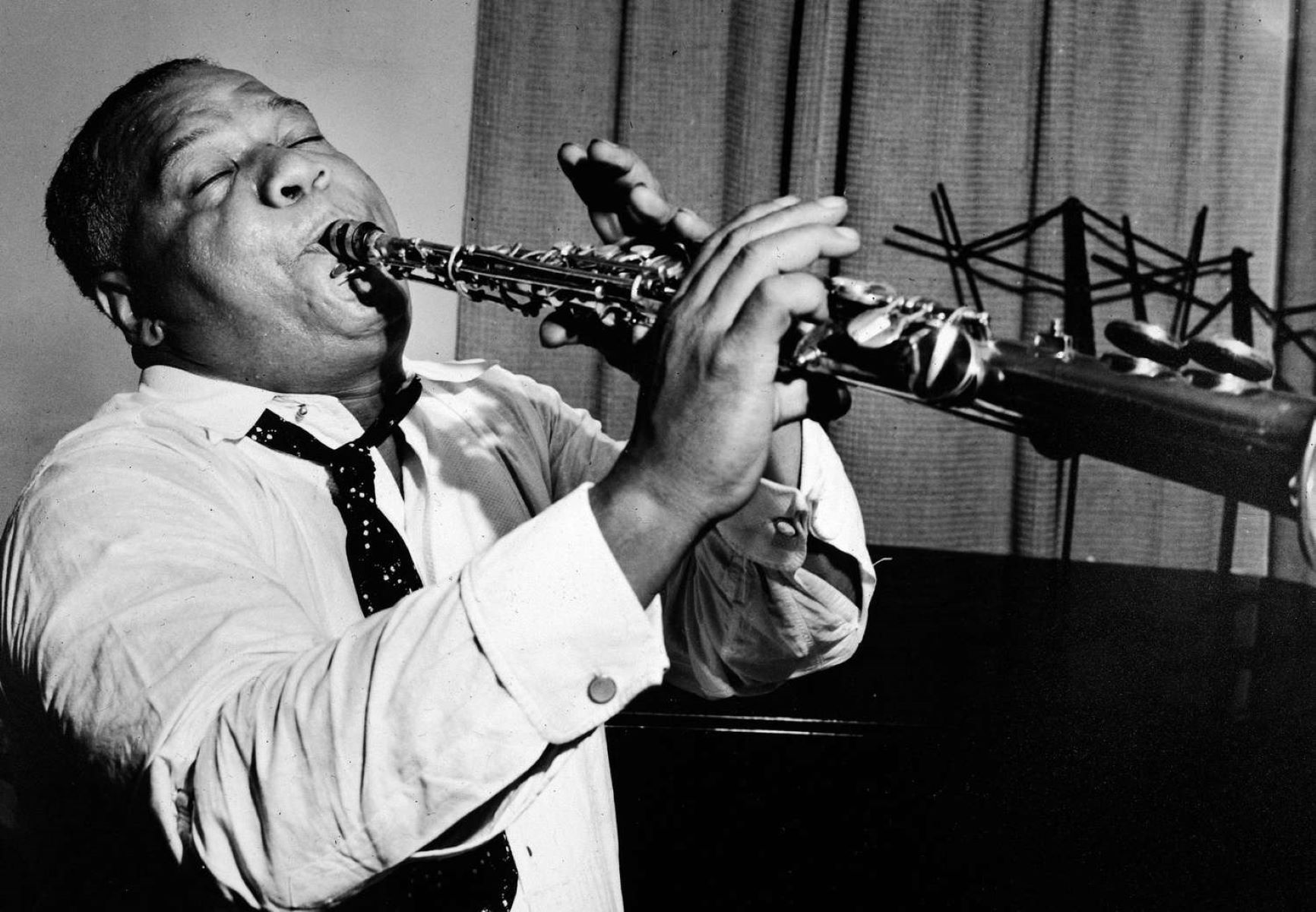Home>Production & Technology>Music Video>What Was The First Kpop Music Video


Music Video
What Was The First Kpop Music Video
Published: November 12, 2023
Discover the origins of Kpop with the first-ever music video! Delve into the history and evolution of this iconic genre through its groundbreaking visual storytelling.
(Many of the links in this article redirect to a specific reviewed product. Your purchase of these products through affiliate links helps to generate commission for AudioLover.com, at no extra cost. Learn more)
Table of Contents
Introduction
Kpop, short for Korean pop music, has taken the world by storm with its catchy tunes, impressive choreography, and stunning visuals. One crucial element that contributes to the success of Kpop is its music videos. These videos not only showcase the talent and charisma of the artists but also serve as a platform for storytelling and creative expression. They have become an integral part of the Kpop experience, captivating fans with their visually striking aesthetics and captivating narratives.
However, have you ever wondered about the origins of Kpop music videos? Who was the pioneer that set the stage for the extraordinary visual spectacles we see today? In this article, we will delve into the historical background of Kpop and explore the evolution of Korean music videos. We will also uncover the truth behind the first official Kpop music video and dive into the controversies and impact it had on the industry. So, put on your headphones and join us on this journey through the fascinating world of Kpop music videos.
Historical Background of Kpop
Before diving into the world of Kpop music videos, it is important to understand the historical background of Kpop itself. Kpop originated in South Korea in the 1990s and quickly gained popularity not only within the country but also across Asia. The genre is characterized by its blend of catchy melodies, synchronized choreography, and visually appealing performances.
In the early days of Kpop, music videos played a relatively minor role. They were often simple and straightforward, focusing mainly on showcasing the artists’ talent and their ability to perform intricate dance routines. These music videos provided a visual representation of the songs, but they lacked the elaborate storylines and high production values that we see today.
As Kpop gained momentum and started to reach international audiences, the demand for more visually captivating and engaging music videos grew. This led to advancements in technology and production techniques, enabling greater creativity and innovation in Kpop music videos. Artists began to experiment with different concepts, costumes, and special effects to create visually stunning and memorable music videos that would leave a lasting impression on viewers.
The rise of the internet and social media platforms further fueled the popularity of Kpop music videos. Fans from around the world could now easily access and share these videos, creating a global community of Kpop enthusiasts. The exponential growth of online streaming platforms such as YouTube allowed Kpop music videos to reach millions of views within a short span of time, showcasing the immense influence and impact of the genre.
With the continuous evolution of Kpop and its music videos, fans eagerly awaited each new release, eagerly anticipating the mesmerizing visuals and captivating storytelling that would accompany the songs. Today, Kpop music videos have become a multi-million-dollar industry, with high-budget productions featuring extravagant sets, intricate choreography, and elaborate costumes.
In the next section, we will explore how Korean music videos evolved over time, paving the way for the groundbreaking visuals and storytelling that we see in the world of Kpop today.
Evolution of Korean Music Videos
The evolution of Korean music videos has been a fascinating journey, with significant changes and innovations taking place over the years. As Kpop grew in popularity, music videos became an essential tool for promoting songs and attracting viewers. Let’s take a closer look at the different phases of this evolution.
Phase 1: Simple Performances (1990s-early 2000s) – During this period, Kpop music videos were relatively simple, focusing primarily on showcasing the artists’ performance skills. The videos featured artists singing and dancing in a studio or on a stage, with minimal storytelling or visual effects. Examples of this era include Seo Taiji and Boys’ iconic “Nan Arayo” and S.E.S’s energetic “I’m Your Girl.”
Phase 2: Storytelling and Cinematic Techniques (mid-2000s) – As Kpop gained international recognition, music videos started incorporating more elaborate storylines and cinematic techniques. Artists like Rain and BoA were pioneers in this phase, presenting music videos that had a clear narrative and employed sophisticated visual effects. Rain’s “How to Avoid the Sun” and BoA’s “No.1” are prime examples of this era.
Phase 3: Conceptual and Artistic Expression (late 2000s-early 2010s) – This phase witnessed an explosion of creativity, with Kpop music videos embracing diverse concepts and artistic expressions. Artists such as Big Bang and Girls’ Generation pushed boundaries, experimenting with different genres, fashion styles, and visual aesthetics. Big Bang’s “Fantastic Baby” and Girls’ Generation’s “I Got a Boy” exemplify this era’s emphasis on bold visuals and unique concepts.
Phase 4: High Production Values and Global Ambitions (mid-2010s-present) – The current phase highlights the international success of Kpop and its music videos. High production values, intricate choreography, and visually stunning sets are now the norm. Kpop groups like BTS and Blackpink have captured global attention with their music videos, breaking records and pushing the boundaries for what is possible in terms of visuals and storytelling. BTS’s “Blood Sweat & Tears” and Blackpink’s “Kill This Love” represent the grandeur and innovation of this era.
The evolution of Kpop music videos showcases the industry’s constant drive for innovation and creativity. From simple performances to elaborate storylines, Kpop music videos have captivated audiences worldwide and redefined the standards for visual expression in the music industry.
The Pioneers of Kpop Music Videos
While the evolution of Kpop music videos has been a collective effort involving numerous artists and professionals, there are several pioneers who played a significant role in shaping the landscape of Kpop visuals. These pioneers introduced new concepts, pushed artistic boundaries, and set the stage for the spectacular music videos we see today.
One of the most influential pioneers in Kpop music videos is Lee Soo-man, the founder of SM Entertainment. SM Entertainment is known for its innovative and visually stunning music videos. Lee Soo-man’s vision was to create music videos that not only showcased the talent of the artists but also told compelling stories. Artists from SM Entertainment, such as H.O.T and BoA, set the benchmark for Kpop music videos with their visually striking and creative concepts.
Another pioneer in the realm of Kpop music videos is Park Jin-young, the founder of JYP Entertainment. Park Jin-young, also known as J.Y. Park, emphasized the importance of storytelling and creating emotional connections with the audience through music videos. His collaborations with artists like Rain and Wonder Girls helped establish JYP Entertainment’s reputation for producing high-quality and emotionally resonant music videos.
One cannot discuss the pioneers of Kpop music videos without mentioning the iconic group, Big Bang. With their groundbreaking visuals and experimental concepts, Big Bang revolutionized Kpop music videos. Their videos, such as “Fantastic Baby” and “Bang Bang Bang,” featured bold fashion choices, intricate choreography, and captivating cinematic elements. Big Bang’s music videos pushed the boundaries of creativity and set the stage for a new era of visually captivating Kpop videos.
Other artists and groups like Girls’ Generation, TVXQ, 2NE1, and BTS have also been instrumental in shaping the Kpop music video landscape. Girls’ Generation’s “Gee” became a cultural phenomenon with its catchy tune and synchronized dance moves, while BTS’s “Dope” and “Fire” garnered international recognition for their impeccable storytelling and powerful performances.
The pioneers of Kpop music videos not only set new standards for creativity and visual aesthetics but also paved the way for future generations of artists and directors to explore and experiment. Their passion, innovation, and dedication to their craft have left an indelible mark on the industry, inspiring artists and fans alike.
Debunking the Myths: The First Official Kpop Music Video
There has been much speculation and debate over which music video can be considered the first official Kpop music video. Different sources and fans have put forth various claims, giving rise to several myths and misconceptions. In this section, we will explore the truth behind the first official Kpop music video and debunk some of these myths.
Myth 1: “Nan Arayo” by Seo Taiji and Boys – Many fans believe that “Nan Arayo” by Seo Taiji and Boys is the first official Kpop music video. While it is an iconic and influential song that marked the beginning of Kpop as we know it today, the music video for “Nan Arayo” was not the first official Kpop music video. It was released in 1992 and showcased the group’s unique style and unconventional visuals, but it was not the pioneering music video in the Kpop genre.
Myth 2: “I’m Your Girl” by S.E.S – Another popular myth suggests that the music video for “I’m Your Girl” by S.E.S was the first official Kpop music video. While “I’m Your Girl” was released in 1997 and garnered significant attention, it still does not hold the title for the first official Kpop music video. The music video showcased the group’s youthful and vibrant image, but it was not the groundbreaking video that set the foundation for the Kpop music video industry.
The truth is that determining the first official Kpop music video is challenging because the genre’s development was gradual, with various artists and groups contributing to its evolution. It is essential to recognize that the term “Kpop” itself was not coined until later, and the music video culture in Korea took time to develop.
However, if we consider the music video that had a pivotal impact on the Kpop industry, one video stands out – H.O.T’s “Candy.” Released in 1996, “Candy” was a groundbreaking music video that incorporated elements of storytelling, choreography, and striking visuals. It set a new standard for Kpop music videos and served as a blueprint for future productions. “Candy” was a commercial success and propelled H.O.T to stardom, solidifying their status as the first-generation Kpop idols.
While the first official Kpop music video remains a subject of interpretation, it is important to acknowledge the contributions of various artists and groups in shaping the Kpop music video industry. Each new release built upon the successes and innovations of its predecessors, leading to the visually stunning and creative music videos we enjoy today.
Controversies Surrounding the First Kpop Music Video
As with any significant cultural development, controversies have emerged surrounding the first Kpop music video and its impact on the industry. These controversies shed light on the challenges faced by artists and the evolving nature of the Kpop music video landscape.
One controversy revolves around the issue of cultural appropriation. Some critics argue that early Kpop music videos, including the first-generation ones, incorporated elements from various cultures without proper understanding or respect. This raised concerns about the proper representation and appreciation of cultural diversity within the Kpop industry.
Another controversy is related to the focus on appearance and the pressure for artists to conform to societal beauty standards. Kpop music videos often feature flawless visuals, elaborate costumes, and meticulous attention to grooming. This has led to discussions about the potential negative impact on body image and self-esteem, particularly among young fans who may feel the need to compare themselves to the idealized images portrayed in these videos.
Furthermore, the intense competition within the Kpop industry has given rise to allegations of unfair treatment and exploitation of artists. Some argue that the competitive nature of the industry, combined with demanding schedules and strict management practices, can lead to the physical and mental exhaustion of Kpop idols.
Additionally, controversies have surfaced regarding the use of excessive product placements in Kpop music videos. Some critics claim that these videos have become platforms for advertising, with brands paying substantial sums to feature their products prominently. The concern is that this commercialization can compromise the artistic integrity of the music videos and dilute the storytelling aspect.
It is important to note that the controversies surrounding the first Kpop music videos reflect the larger societal discussions on cultural representation, beauty standards, labor practices, and commercialization. While these controversies highlight areas for improvement within the industry, they also serve as a catalyst for change and encourage artists, companies, and fans to engage in meaningful dialogue and promote positive transformations.
As the Kpop industry continues to evolve, addressing these controversies becomes essential to ensure the sustained growth and positive impact of Kpop music videos. By fostering inclusivity, nurturing artists’ well-being, and maintaining artistic integrity, the industry can strive for a more ethically conscious approach in crafting visually stunning and culturally impactful music videos.
Impact and Legacy of the First Kpop Music Video
The first Kpop music video, although debated, holds immense significance in shaping the industry and leaving a lasting impact on the global music scene. Its legacy can be observed in multiple aspects that have contributed to the international success and cultural phenomenon of Kpop.
One of the key impacts of the first Kpop music video is its role in popularizing the genre not only within South Korea but also beyond its borders. These visually captivating videos introduced audiences to the unique blend of infectious melodies, synchronized dance routines, and captivating storytelling that defines Kpop. The popularity of the first Kpop music video laid the foundation for the global fanbase and the subsequent worldwide spread of the genre.
Furthermore, the innovation and creativity showcased in the first Kpop music video set the standard for future productions. It paved the way for subsequent artists and groups to explore new boundaries, experiment with diverse visual concepts, and push the envelope with their music videos. The legacy of the first Kpop music video is evident in the elaborate and cinematic productions we see today, where highly stylized visuals and compelling narratives have become the norm.
The first Kpop music video also played a crucial role in defining the idol culture that is synonymous with Kpop. The captivating performances and charismatic personalities of the artists showcased in the video led to the emergence of fandom culture and the creation of dedicated fan communities. The influence of the first Kpop music video in shaping the idol phenomenon is undeniable, as it set the stage for the intense fan loyalty and passionate support that characterizes Kpop fandoms worldwide.
Moreover, the first Kpop music video contributed to the global recognition and economic success of the Kpop industry. With the immense popularity and influence of Kpop music videos, artists and companies have been able to expand their reach and tap into international markets. Kpop music videos have garnered millions of views on digital platforms, strengthening the industry’s presence and generating significant revenue streams.
The impact and legacy of the first Kpop music video extend far beyond its initial release. It ignited a cultural phenomenon that continues to captivate audiences around the world and shape the future of the music industry. From its influence on visual aesthetics to the establishment of idol culture and the globalization of Kpop, the first Kpop music video remains a milestone in the genre’s history, representing the creativity, passion, and enduring appeal of Kpop music videos.
Conclusion
Kpop music videos have become an integral part of the global music industry, captivating audiences with their visually stunning cinematography, intricate choreography, and compelling storytelling. The historical background of Kpop, the evolution of Korean music videos, and the pioneers who pushed the boundaries have contributed to the genre’s meteoric rise in popularity and influence.
While the debate over the first official Kpop music video continues, it is clear that the impact and legacy of these videos cannot be ignored. They have played a significant role in popularizing Kpop globally, defining the idol culture, and revolutionizing the visual aesthetics of music videos. From the simple performances of the 90s to the conceptual and artistic expressions of today, Kpop music videos have continuously pushed the boundaries of creativity and set new standards for the industry.
The controversies surrounding Kpop music videos highlight the need for ongoing discussions about cultural appropriation, representation, body image, labor practices, and commercialization. By addressing these issues, the industry can work towards a more inclusive, socially conscious, and artistically fulfilling future.
Looking ahead, the future of Kpop music videos holds endless possibilities. As technology advances, we can expect even more visually stunning and immersive experiences. Kpop will continue to captivate audiences with its infectious music, breathtaking visuals, and passionate performances, further solidifying its position as a global cultural powerhouse.
So, whether you’re a dedicated fan or a curious newcomer, immerse yourself in the enchanting world of Kpop music videos. Experience the creativity, passion, and innovation that have made them a force to be reckoned with in the music industry. Brace yourself for captivating visuals, flawless choreography, and a journey that will transport you to a world of music and artistry like no other.











